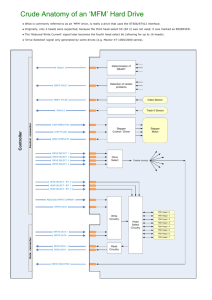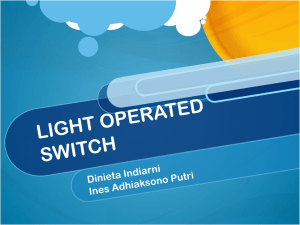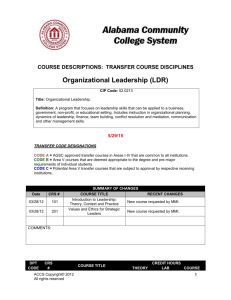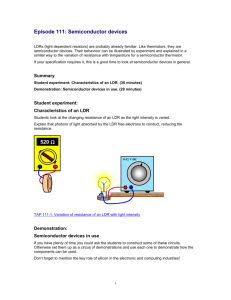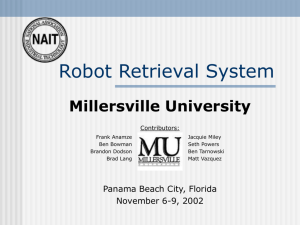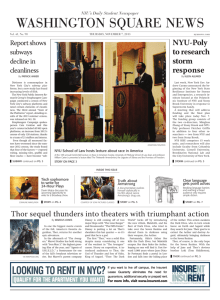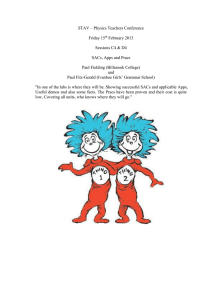Presentation of the
advertisement
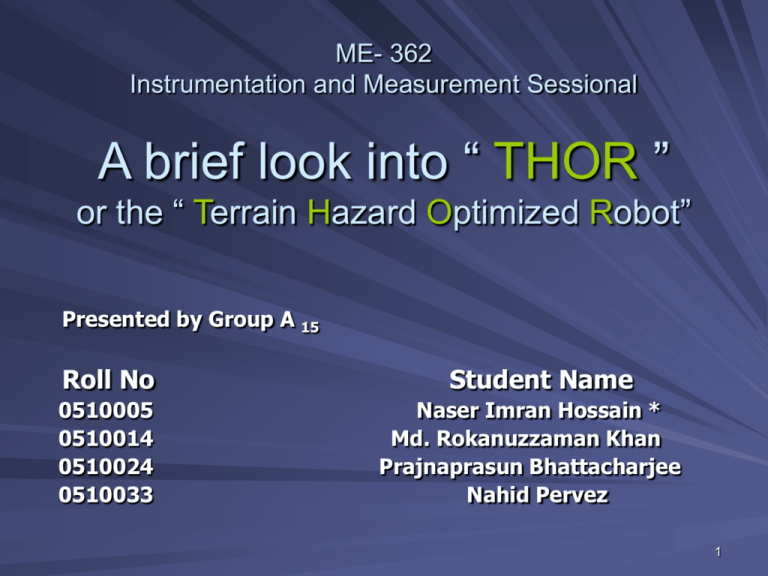
ME- 362 Instrumentation and Measurement Sessional A brief look into “ THOR ” or the “ Terrain Hazard Optimized Robot” Presented by Group A 15 Roll No 0510005 0510014 0510024 0510033 Student Name Naser Imran Hossain * Md. Rokanuzzaman Khan Prajnaprasun Bhattacharjee Nahid Pervez 1 Presentation Overview Introduction Objectives & Features Mechanical orientation Circuitry Purpose Critique Optimization & Future plans Conclusion Acknowledgments 2 Introduction Since Karel Capek (1890-1938) first used the word ‘robot’, man has been infatuated with the creation of mechanized companions. Our project was named after the Norse god Of thunder who use to banish evil to their demise. For it too might one day help humanity in its struggle against the evils of pollution and contamination. Our inspiration was the brave remote neutralization of a possible catastrophe by one of our hon’ teachers when a jammed Co-60 source of the γ-beam irradiator at Bangladesh Institute of Nuclear Agriculture (BINA) threatened the lives of many in the late 80’s. 3 Attendees The Project - “ THOR ” The team 4 Objectives Manually maneuver into hazardous environment. Avoid obstacles and detours on the way using fast directional control. Grip mission objectives with link-driven gripper Bring objective back into safe containment area and deposit. Sense heightened level of temperature or lack of light on due process and indicate. 5 Features Custom designed “ Gripper Arm ” Multidirectional “Pseudo Holonomic” Control. Smart ‘ Ambient ’ light and heat sensing. High torque driving mechanism for heavy payloads. Minor object avoidance. 6 Mechanical Orientation Gripper Arm Part 1: The “ Grip ” Acrylic made to reduce weight. Wire manipulated. Maximum jaw clearance 8mm. Spring operated auto recoiling. Designed to always assume a vertical position during operation. Gripping control by gear-motor. Fig : The Grip 7 Mechanical Orientation (cont) Part 2: The “Arm” Consists of 4 acrylic links in total Supports the vertical positioning of the grip/claw. Counter supports each other in cases of heavier payloads. Arm leverage and height controlled by wires and a gear motor. Fig: The Arm 8 Mechanical Orientation (cont) Navigation Strategy Part 1: Hardware Separate gear motors control individual wheels, crane fulcrum and gripper. Polarity is changed instantaneously with DPDT switches. 9 Mechanical Orientation (cont) Part 2 : Mechanics Both wheel rotate in common directions to go forward or backward. To ensure Pseudo-Holonomic movement, motors are coupled to the forward wheels only. 10 Mechanical Orientation (cont) RW rotates opposite to LW to change direction and vice versa. Smooth turns are made possible by stopping one of the wheels and resuming the other 11 Circuitry Part 1: Overview & Functions LDR senses lack of light and indicates with a Green LED. NTC-Type thermistor senses increase in temperature and indicates with a Red LED Possible to calibrate sensors according to ambient variables. In circuit “ Operational Amplifier ” ( LM-324 ) synchronizes between sensor feedbacks and indicators. 12 Circuitry(cont) Sensing lack of light – Under full incident light (spectral range of 515 nm ~ 730 nm ) , LDR, with its decreased resistance, renders the path to the LED inactive. – In darkness, its resistance increases. Op-Amp compares the feedback and lights up the green LED. 13 Circuitry(cont) Sensing heightened temperature – Under increased temperature, the NTC type thermistor resistance is decreased rendering it inactive in the circuit. Op-Amp again compares the feedbacks and lights up the red LED. – When ambient temperature recedes to normal, the resistance increases cutting off power supply to the LED. 14 Circuitry(cont) Part 2: Logistical Consideration Over the range of -50°C to 150°C, NTC thermistors offer a distinct advantage in sensitivity to temperature changes compared to other temperature sensors like PtRTD. Thermistors are also easily available and relatively cheap. Fig: Resistance Vs Temp Graph 15 Circuitry(cont) Light Dependent Resistors (LDR) provide a comfortable range of resistive outputs to work with. Like the thermistor, LDRs are also easily available and relatively cheap. Fig: Resistance Vs Light Intensity graph Variable resistors are used to calibrate circuit in contemporary environment. 16 Purpose THOR at its infancy, is but only an engineering project. However with proper planning it maybe employed in a variety of useful purposes:- Reconnoitering through possibly radioactive or hazardous environment. Salvage mission over terrains unsuitable for human exposure. Charting terrain as a drone for possible thermal leakage , heat flux and variation is luminescence. 17 Purpose (cont) Animation showing THOR’s dynamic movements 18 Critique Acrylic parts are vulnerable to sudden shock-loads. The wiring of the motors and DPDT switches often breaks loose. The bead type thermistor is not as well responsive as the LDR. So the signaling might be delayed The wires used for gripper and arm-control is not that strong in tension and might sever under heavy payloads. 19 Optimization & Future plans How to Optimize the current configuration? Replacing acrylic parts with stronger materials, like HDPE (High Density Poly Ethylene) or Aluminum. Integrating radio frequency control and servo drives. Incorporating solar-power for prolong operation. Automating directional commands via microcontrollers. Replacing LDR with more sensitive sensors such as phototransistors. 20 Optimization & Future plans What prospect does THOR’s future hold? Application in humanitarian services like minesweeping, scavenging battle debris. Stellar and interstellar explorations. 21 Conclusion At the end, we can only hope that we were able to achieve what we set out to do at the beginning of the course. We learned much throughout the semester, about mechanical and electrical components and most importantly about human resource management. However, all in all that was quite a delightful experience. 22 Acknowledgments For the completion of our project, we are greatly indebted to the following persons. Without their guidance, it would’ve been impossible to go through such an endeavour. Dr. M.A. Taher Ali. – Professor, Dept. of Mechanical Engineering A.K.M Monjur Morshed – Assistant Professor, Dept. of Mechanical Engineering Md. Wasim Akram – Lecturer, Dept. of Mechanical Engineering Md. Al Amin Khan Chowdhury – Lecturer, Dept. of Mechanical Engineering Abdul Motin – Lecturer, Dept. of Mechanical Engineering Mr. Masudur Rahman – Assistant Instrumentation Engineer 23 Thank you all for joining in. Visit http://project-thor.pbwiki.com If you have any further queries. 24 Q & A session Feel free to ask 25


